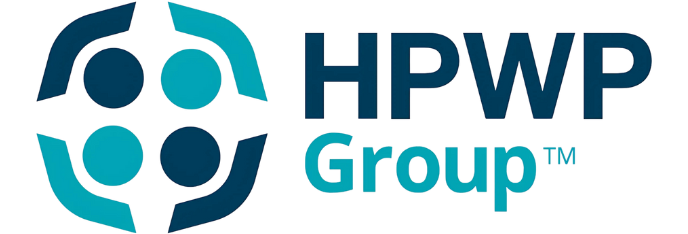12 Types of Leadership Development For Training Leaders

There’s a common saying: “Leaders are made, not born.” While many naturally possess leadership qualities, such as confidence and the ability to connect with others, nurturing these traits through intentional development is what truly creates impactful leaders. To become a good leader, one needs to learn, practice, and apply the necessary skills to guide teams, make strategic decisions, and inspire progress.
To cultivate leaders, organizations rely on leadership training methods that focus on building and improving hard skills, like strategic decision-making, and soft skills, like communication and conflict resolution. By engaging in types of leadership development programs and applying leadership development techniques, individuals can refine their abilities, overcome challenges, and grow into roles that drive meaningful change.
Let’s explore various leadership development techniques and strategies that organizations can use to nurture and support their current and future leaders.
Types of Leadership Development Programs
Leadership development programs enhance skills, knowledge, and behaviors essential for effective leadership. Each program type serves a specific purpose, addressing the needs of leaders at different stages in their professional journey.
1. Formal Training Programs
Formal training programs involve structured learning experiences, such as workshops, seminars, and certification courses, that develop critical leadership competencies. These programs focus on areas such as decision-making, team management, conflict resolution, and strategic thinking.
Formal training programs can be facilitated by experienced instructors, leadership consultants, or organizational development teams, either internally within the company or through external providers like HPWP Group.
They can be done in person or remotely, making them accessible to participants regardless of location. These programs often incorporate a mix of instructional methods, such as live presentations, case studies, group activities, and hands-on exercises, to create an engaging and practical learning experience.
Examples:
- An organization partnering with HPWP Group to deliver a High Performance Leadership Workshop™ that emphasizes practical leadership techniques
- Virtual seminars focusing on topics like leading remote teams or managing change during organizational shifts
Benefits:
- Comprehensive Skill-building: These programs help leaders solidify their understanding of essential leadership concepts, such as strategic planning and interpersonal communication. Participants leave equipped to navigate challenges and guide their teams.
- Flexible Implementation: Organizations can adapt formal training to meet specific goals, such as fostering better collaboration or preparing employees for leadership transitions.
- Accessibility: The ability to conduct sessions in person or online ensures inclusivity and convenience for busy professionals.
- Structured Learning Environment: Participants follow a clear roadmap, building competencies step-by-step with guidance from experts.
- Application of Skills: These programs often include real-world scenarios and problem-solving exercises, allowing participants to practice and refine their skills.
2. Mentorship Programs
Mentorship programs pair experienced leaders (mentors) with less seasoned employees (mentees). Mentors share insights, provide guidance, and support professional growth, allowing mentees to gain firsthand knowledge from someone who has navigated similar challenges.
Examples:
- A mid-level manager working with a senior executive to refine their skills in stakeholder communication and conflict management
- Peer mentorship programs within departments that encourage collaboration and knowledge-sharing among colleagues
Benefits:
- Personalized Learning: Mentors provide advice from experience and actionable feedback, helping mentees develop strategies to achieve their career goals. One-on-one guidance also boosts mentees’ confidence, empowering them to approach their responsibilities with greater clarity and self-assurance.
- Knowledge Transfer: Mentorship fosters the sharing of institutional knowledge, cultural understanding, and practical leadership techniques that are difficult to gain from traditional training.
3. Executive Coaching
Unlike other types of leadership training programs, executive coaching offers a one-on-one approach to leadership development. Tailored to senior leaders, this leadership development technique involves working with a professional coach to identify personal and professional goals, overcome challenges, and improve leadership effectiveness. Coaches use a customized approach to help leaders refine their decision-making, communication, and strategic planning skills while providing actionable feedback and support.
Examples:
- An executive coach working with a CEO to improve communication with the board of directors during a major organizational shift
- A COO partnering with a coach to strengthen their decision-making skills in high-stakes situations
Benefits:
- Customized Strategies: Coaching focuses on individual leaders’ unique challenges and goals, ensuring that development aligns with their responsibilities and organizational needs. Leaders receive immediate, actionable insights for addressing pressing concerns.
- Increased Self-awareness: Executive coaching helps leaders identify strengths and areas for improvement, empowering them to refine their leadership approach while improving team performance.
4. Emerging Leader Programs
Emerging leader programs are designed for employees with potential to assume leadership roles in the future. These programs emphasize foundational leadership skills, such as decision-making, communication, and problem-solving, while introducing participants to broader organizational objectives.
Examples:
- Programs that rotate junior managers through different departments to build cross-functional knowledge
- Leadership workshops focusing on developing emotional intelligence and collaboration skills for new supervisors
Benefits:
- Building future-ready leaders: Early leadership training equips participants with the skills and mindset needed to take on greater responsibilities. This creates a pipeline of capable leaders.
- Boosting confidence: By preparing participants for leadership challenges, these programs ensure they feel ready to step into advanced roles.
5. Succession Planning Programs
When a leader resigns, retires or otherwise leaves, organizations can face significant challenges if there isn’t a person ready to fill their role. These types of leadership training programs are designed to mitigate this risk by identifying and preparing high-potential employees to step into critical leadership positions. Succession planning focuses on developing the necessary skills, knowledge, and experience to ensure transitions go off without a hitch when leadership changes occur.
Examples:
- A program designed to groom department heads for C-suite roles over three years, involving leadership training, mentorship, and exposure to strategic decision-making
- Workshops that train high-potential employees to handle the specific responsibilities of outgoing leaders
Benefits:
- Organizational Continuity: Succession planning ensures that key positions are filled quickly, minimizing disruptions during leadership changes.
- Employee Retention: High-potential employees are more likely to remain loyal when they see a clear path for advancement within the organization.
Practical Leadership Development Methods
Leadership training methods complement structured types of leadership development by allowing leaders to develop skills through real-world application. Programs that provide current and potential leaders with hands-on opportunities to grow bridge the gap between theory and practice.
1. On-the-Job Training
On-the-job training immerses leaders in real-world responsibilities so they can learn by doing. This method often involves job rotations, project leadership, and shadowing experienced leaders.
Examples:
- A junior manager temporarily assigned to another department to gain cross-functional experience and broaden their perspective
- A mid-level manager shadowing a senior executive during key decision-making meetings to learn how to navigate complex challenges and interact with stakeholders.
Benefits:
- Hands-on Experience: Leaders learn to apply concepts in practical settings, strengthening their problem-solving and adaptability skills.
- Skill Reinforcement: Immediate implementation of lessons ensures that learning is retained and integrated into daily work.
2. Action Learning Programs
Action learning brings groups of leaders together to solve actual business challenges while simultaneously building leadership capabilities. These programs foster collaboration, critical thinking, and innovation.
Examples:
- A task force assigned to develop a cost-reduction strategy while participating in a broader leadership development initiative
- Teams working on introducing new technologies or services within the organization
Benefits:
- Real-world Impact: Participants address actual organizational problems, making their training immediately beneficial to the company.
- Collaborative Learning: Leaders learn from one another’s perspectives, building teamwork and mutual respect.
Assessment-based Methods
Assessment-based methods allow leaders to identify their strengths, weaknesses, and areas for improvement. They provide feedback and insights that guide a leader’s development journey, helping them align their goals with the organization’s needs.
1. 360-Degree Feedback
This method collects input from multiple sources, such as peers, subordinates, supervisors, and sometimes clients. By gathering diverse perspectives, leaders gain a holistic understanding of their performance and how others perceive their actions.
Examples:
- A senior manager receives feedback from team members to understand how well they communicate goals and motivate employees
- A newly promoted director uses 360-degree feedback to identify potential blind spots in their leadership style
Benefits:
- Comprehensive Insights: Leaders gain a clearer picture of their strengths and areas for improvement by hearing from various stakeholders.
- Targeted Growth: This feedback helps leaders focus on specific behaviors that can enhance their effectiveness and team dynamics.
2. Self-Assessment Tools
These encourage leaders to self-evaluate their abilities, leadership styles, and emotional intelligence. Used correctly, self-assessment tools empower leaders to identify areas of strength and create personalized development plans.
Examples:
- Emotional intelligence assessments that measure skills like empathy and conflict resolution
- Leadership style inventories that reveal tendencies such as collaborative or directive approaches to management
Benefits:
- Increased Self-awareness: Leaders gain a deeper understanding of their natural tendencies and how they impact others.
- Customized Development: By pinpointing gaps, leaders can focus on specific areas for growth that align with organizational goals.
Experiential and Collaborative Learning
Experiential and collaborative learning emphasizes hands-on practice and teamwork, allowing leaders to grow through real-life application and shared experiences.
1. Role-Playing and Simulations
Role-playing and simulations immerse leaders in controlled scenarios that mimic real-world challenges. These exercises help leaders practice handling difficult situations, such as conflict resolution, strategic decision-making, or crisis management, in a risk-free environment.
Examples:
- A simulation where leaders manage a mock budget shortfall, making decisions to balance resources while maintaining team morale
- Role-playing exercises that teach managers how to address performance issues with employees constructively
Benefits:
- Safe Learning Environment: Leaders can test strategies without real-world consequences, allowing them to build confidence in their abilities.
- Improved Decision-making: Practicing under pressure helps leaders make better choices in actual situations.
2. Peer Learning and Networking
Peer learning and networking allow leaders to exchange insights, share experiences, and learn from colleagues within and outside their organization. Structured discussions and forums provide a platform for collaboration and fresh perspectives.
Examples:
- Leadership roundtables where managers from different departments discuss common challenges and solutions
- Networking events that connect leaders from various industries to share strategies and best practices
Benefits:
- Diverse Perspectives: Engaging with peers introduces leaders to new ideas and approaches to leadership.
- Mutual Support: Networking builds professional relationships that can provide ongoing guidance and encouragement.
3. Leadership Retreats
Leadership retreats take leaders out of their usual environments, allowing them to focus entirely on development and reflection. These offsite programs often include workshops, team-building exercises, and networking opportunities.
Example:
- A multi-day retreat for senior managers to collaborate on long-term strategic planning while participating in personal development workshops
- An offsite program for emerging leaders that combines outdoor challenges, such as problem-solving activities, with workshops on emotional intelligence and effective communication to foster both personal and professional growth
Benefits:
- Intensive Learning: Retreats provide dedicated time for leaders to refine their skills without the distractions of daily responsibilities.
- Networking Opportunities: Leaders connect with peers, building valuable relationships and sharing best practices.
Elevate Your Leadership Team With HPWP Group
Leadership development is the cornerstone of building resilient organizations and inspiring teams to achieve their best. By investing in diverse leadership training methods and programs, organizations prepare leaders to tackle challenges and create meaningful change.
At HPWP Group, we offer several types of leadership training designed to align with high-performance principles. Our comprehensive programs empower leaders to foster collaboration, innovation, and success in their teams.
If you are looking to explore actionable leadership strategies more deeply, download our book. This resource offers practical insights on types of leadership training and steps to elevate your leadership approach and build a thriving workplace culture.
Explore our leadership development techniques to see how we can help you unlock your team’s potential. If you have inquiries, don’t hesitate to message us, and a member of our team will reach out to you as soon as possible.










